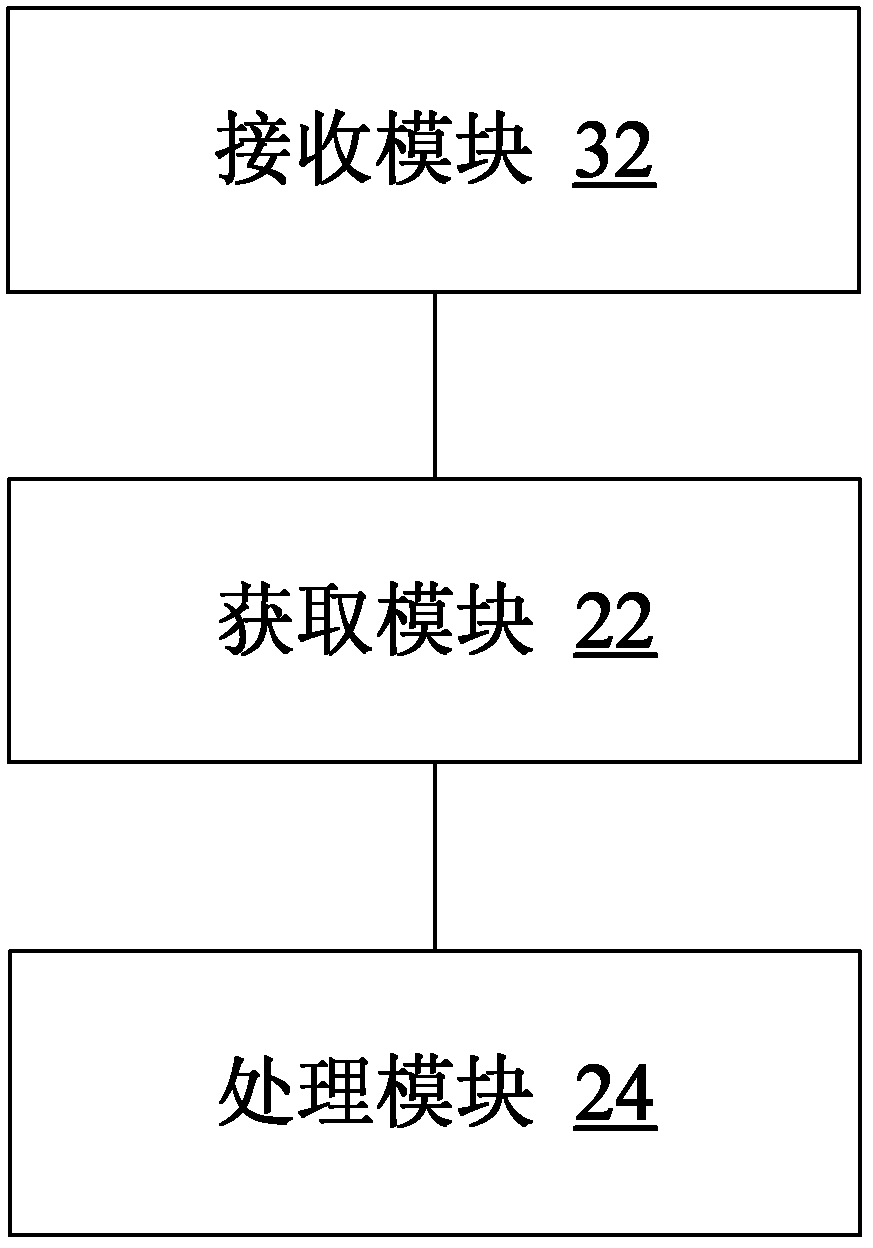Method and device for processing power parameters
A technology of power parameters and processing methods, applied in the field of communication, can solve problems such as UE data demodulation or inaccurate channel measurement, and achieve the effect of improving system performance
- Summary
- Abstract
- Description
- Claims
- Application Information
AI Technical Summary
Problems solved by technology
Method used
Image
Examples
Embodiment 1
[0070]In this embodiment, a method of signaling the base station to inform the UE of the power ratio of the ABS subframe to the non-ABS subframe is provided for the UE to perform data demodulation. Refer to Figure 5 As shown, the process includes the following steps:
[0071] Step 1, the base station sends the signaling b1b2b3=010 to the UE through the RRC Connection Reconfiguration signaling. Table 1 is the correspondence table of signaling and power ratio. As shown in Table 1, the above signaling indicates that the UE is in the ABS subframe and the non-ABS The subframe PDSCH EPRE ratio is 1 / 3.
[0072] Signaling b1b2b3
000
0
001
1 / 2
010
1 / 3
011
1 / 4
100
1 / 8
101
1 / 16
110
1 / 32
111
1
[0073] Table 1
[0074] Step 2: The ratio 1 / 3 obtained by the UE according to the above signaling of the base station is multiplied by the powe...
Embodiment 2
[0077] In this embodiment, a method for signaling the base station to notify the UE of the power difference between an ABS subframe and a non-ABS subframe is provided for the UE to perform data demodulation. Refer to Figure 5 As shown, the flow of the control channel mapping and detection method in the figure includes the following steps:
[0078] Step 1, the base station sends the signaling b1b2b3=001 to the UE through the SystemInformationBlockType2 signaling. Table 2 is the correspondence table between the signaling and the power difference. As shown in Table 2, the above signaling indicates that the UE is in the ABS subframe and the non-ABS subframe The frame PDSCH EPRE difference is 3dB.
[0079] Signaling b1b2b3
Power difference (dB)
000
0
001
3
010
6
011
9
100
12
101
15
110
18
111
46
[0080] Table 2
[0081] Step 2: The differen...
Embodiment 3
[0084] In this embodiment, a method of signaling the base station to inform the UE of the power ratio of the ABS subframe to the non-ABS subframe is provided for the UE to perform channel measurement. Refer to Figure 5 As shown, the process includes the following steps:
[0085] Step 1, the base station sends the signaling b1b2b3=011 to the UE through the RRC Connection Reconfiguration signaling. Table 3 is the correspondence table of the signaling and the power ratio. As shown in Table 3, the above signaling indicates that the UE is in the ABS subframe and the non-ABS The subframe PDSCH EPRE ratio is 1 / 4.
[0086] Signaling b1b2b3
power ratio
000
0
001
1 / 2
[0087] 010
1 / 3
011
1 / 4
100
1 / 8
101
1 / 16
110
1 / 32
111
1
[0088] table 3
[0089] Step 2, the UE multiplies the ratio 1 / 4 obtained by the above signaling of the base stati...
PUM
 Login to View More
Login to View More Abstract
Description
Claims
Application Information
 Login to View More
Login to View More - R&D
- Intellectual Property
- Life Sciences
- Materials
- Tech Scout
- Unparalleled Data Quality
- Higher Quality Content
- 60% Fewer Hallucinations
Browse by: Latest US Patents, China's latest patents, Technical Efficacy Thesaurus, Application Domain, Technology Topic, Popular Technical Reports.
© 2025 PatSnap. All rights reserved.Legal|Privacy policy|Modern Slavery Act Transparency Statement|Sitemap|About US| Contact US: help@patsnap.com



